admin
Latest posts by admin (see all)
- How to Plan Great Forest Holidays: 5 Tips for Tourists - September 14, 2018
- Top-5 Helpful Tips How to Get Prepared for the Camping Trip - October 19, 2017
- Bucket list of places to visit in the USA before you die - January 29, 2016
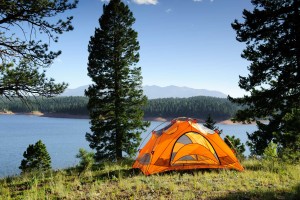 There is nothing better than having a rest in nature, especially when there are people near you with whom you are comfortable – relatives, friends, and good acquaintances.
There is nothing better than having a rest in nature, especially when there are people near you with whom you are comfortable – relatives, friends, and good acquaintances.
The word tourism comes from the French “tour”, which means a walk or a popular type of active recreation able to promote health, expand the circle of communication, and learn more about the surrounding nature.
Camping and hiking leave an unforgettable impression and a charge of positive emotions, if, of course, they are thoroughly prepared. Here you will find useful tips able to make your camping trip unforgettable. Nothing will spoil your adventure if you follow the recommendations found here.
Contents
- Tip number 1: Plan your route taking into account your physical health
- Tip number 2: Learn everything about the area you are going to
- Tip number 3: Make a list of all things that must be at hand
- Tip number 4: Get the basic skills necessary for the camping trip
- Tip number 5: Be choosy in giving preference to fellow travelers
- 5 Pieces of Advice from Experienced Tourists
- Video
Tip number 1: Plan your route taking into account your physical health
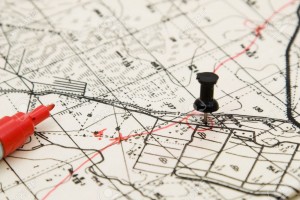 If it is your first camping trip, then you are unlikely to make the goal of your first crazy adventure base camp at the foot of Everest.
If it is your first camping trip, then you are unlikely to make the goal of your first crazy adventure base camp at the foot of Everest.
The route planning should include the following options:
- Know how and when you are going to get to the destination,
- understand the terrain that you have to go through,
- have an idea of important landmarks of the road.
These are the factors that are crucial. Have them in mind and get where you need and when you need to be there.
Hiking is safe enough: often used hiking trails are equipped with markings and signs. But knowing how long you will take the path from point A to point B, you will quickly realize that you have lost your way. Therefore, conduct adequate training and research before each trip. It is very important.
Of course, the first thing that the future tourist should evaluate is his own health. After all, when walking on foot, and simply when you stay long away from civilization, the human body is affected by significant physical stress and natural factors – sun, bad weather, night coolness, etc. Therefore, if you are not sure that your body is ready for these stresses, it is better to refrain from long and tiring trips because it may happen that at the right time medical help will be far away and this can lead to unfortunate consequences.
When choosing a travel route, it is also necessary to take into account the physical condition and preparation of all participants. If there are children in the group, then it is better to limit yourself to a gentle mode of hiking, or to get to the chosen place by transport and walk a short section of the route.
Important: When planning hiking, you need to take into account that for a day tourists can pass an average of 25-30 km of the route, with an average speed of 4-5 km / h.
Back
Tip number 2: Learn everything about the area you are going to
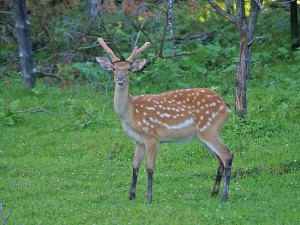 Study the information about the area where about where you are going. This can be extremely important if you go to a place that is very different from the one you live.
Study the information about the area where about where you are going. This can be extremely important if you go to a place that is very different from the one you live.
There are several things that may be crucial. Find out more about:
- what weather conditions are to be expected,
- which animals (for example, bears) and vegetation you can meet,
- which conditions and terrain are there,
- which possible dangers you may face.
Of course, what an adventure is without meeting with the unknown, but it’s better to plan everything than to get bad impressions of the trip, to be seriously threatened or even die.
Important: Before the trip, make sure that someone knows about your journey. If something happens to you and you do not return on time, this person will be able to notify the necessary government service, give them information about your possible whereabouts.
Back
Tip number 3: Make a list of all things that must be at hand
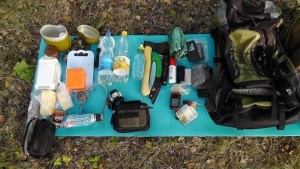 The route has been chosen, the day of the beginning of the trip was appointed, a group of like-minded people gathered. Now, based on the conditions of the forthcoming trip, it is necessary to think about appropriate equipment in order you feel comfortable in any situation and any conditions of the campaign.
The route has been chosen, the day of the beginning of the trip was appointed, a group of like-minded people gathered. Now, based on the conditions of the forthcoming trip, it is necessary to think about appropriate equipment in order you feel comfortable in any situation and any conditions of the campaign.
It is simply necessary to make a list of things and equipment in advance, without which you cannot go on a long journey. At the same time, you should remember
that every kilogram of load, upon going on foot, will put pressure on your shoulders.
Start the list of things and equipment with clothes and shoes because the amount of positive emotions received from the journey to a large extent depends on how much you can protect against bad weather conditions.
The list of things you may need looks like this:
1. Backpack
When buying a backpack, you need to take into account such nuances as size and capacity, comfort (it is good to sit on your shoulders and not rub), strength, water resistance. It is very important to pack your backpack correctly: the heaviest and biggest things are put on the bottom, and on top – small and beating. People engaged in tourism professionally have at least two backpacks: a smaller one for a one-day hike, a larger one for an overnight trip.
2. Sleeping bag
It is necessary if you go on a trip with an overnight stay for several days. Sleeping bag is recommended to take, even if you take a tent with you. After all, this thing will provide you with a comfortable and peaceful sleep that will fill you with strength and energy the next day. For a very warm period of time, there is an easy summer option. Also sleeping bags differ in shape (sleeping blankets or sleeping bags-cocoons).
3. Mat
This small thing is highly recommended to take. It is convenient to lie on it or sit during a halt or lunch. Mats differ in thickness.
4. Tent
If you decide to go on a trip for a long time you cannot do without a tent. Tents differ in capacity: one, two, three and more people. Also, tents are on a warm and cold period.
5. Clothing
Clothes and shoes for the campaign should be chosen comfortable and suitable for different weather conditions. Do not bring new shoes with you. Take with you proven footwear that you already wore and will be confident that your rest will pass without calluses. It is better to take with you two pairs of shoes – basic and removable (in the summer time, sandals will fit). Sneakers are a good choice. Also you need to take a few pairs of socks, which should be made of natural materials. Trousers are also recommended to take at least two pairs (in case the first pair gets wet or damaged), from a dense fabric and, preferably, a simple cut. The jacket is more suitable waterproof and inflatable with a hood. Two pairs of sweaters (light and warm) will be enough for you. In a warmer time, you can grab shorts and T-shirts. As for the headwear, it should be chosen according to the weather. Also do not forget the underwear and raincoat.
6. First Aid Kit
Whenever you are going on a hike you cannot do without a first aid kit. It should contain the most necessary things to be ready for any cases: bandages, plaster, tourniquet, anti-allergic, anti-inflammatory and disinfecting agents, analgesic and antipyretic agents, remedies for cardiovascular and gastrointestinal diseases.
7. Food
The amount of food you need should be prepared in advance. Plan an approximate menu. Do not take products that quickly deteriorate (for example, bread can replace biscuits). To ensure that the products are stored longer and not wet, they are recommended to be packed in plastic bottles or containers, glass jars, or plastic bags. It is recommended to take high-calorie food for snacks with you. In the main menu you can include cereals, pasta, salt, smoked sausage, vegetable oil, sugar, coffee, tea, crackers. But, nevertheless, everyone makes the menu according to their own taste. You should also think about water – if there is no natural source nearby, take water with you. The dishes should be more conveniently handy, unbreakable, plates – preferably disposable (it is easier and there is no need to wash it). Don’t forget knives. For convenience, you can take a few bowlers to be able to cook several dishes at the same time.
8. Personal hygiene products
You will also need toothpaste, brush, soap, moisturizing cream and other personal care products.
9. Mobile phone and a means of navigation
It is necessary to have means of communication to be on the safe side. As for the navigation, it is much safer if you have a navigator helping to determine where you are.
Important: Your list may include more things, however, these are the basic necessities, which any tourist can’t do without.
Back
Tip number 4: Get the basic skills necessary for the camping trip
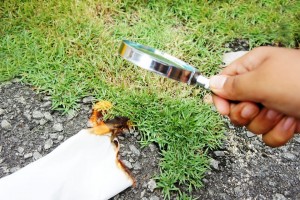 It is very important to get the basic skills before you have your camping trip. Not only read about them but learn more taking into account the opinions and experiences of other people, ask knowledgeable tourists. If you are new to hiking and camping, consider the opportunity to join a group of experienced tourists or the organizers of hikers and ask them for help.
It is very important to get the basic skills before you have your camping trip. Not only read about them but learn more taking into account the opinions and experiences of other people, ask knowledgeable tourists. If you are new to hiking and camping, consider the opportunity to join a group of experienced tourists or the organizers of hikers and ask them for help.
In order to know how to behave, if something goes wrong, you will need to have the following skills:
- How to make a fire;
- How to send a smoke signal;
- How to put a tent;
- How to use the compass and GPS navigator;
- How to read the map.
It is very important to get a good compass and choose GPS navigator correctly. Get a map of the area where you are going to go and carefully explore the area before the trip to know what awaits you. Take a habit during a hike to look around and check with the map to always know your whereabouts. Try to memorize the terrain near the trail, the most notable landmarks, and make notes about them on the map. If the map is not made of waterproof material, then put it in a clean cellophane bag and seal it. This may mean that you have to cut the card into pieces and put each of the pieces in a separate package, but this will help keep it dry and clean. As for the use of the compass, for example, the compasses of some producers are completed with a brochure with detailed instructions for its use, which means that you won’t have any problems using it.
Important: Remember that the more necessary skills you have, the more pleasant your camping trip is going to be as you will be able to cope with any difficulties, which may take place in nature.
Back
Tip number 5: Be choosy in giving preference to fellow travelers
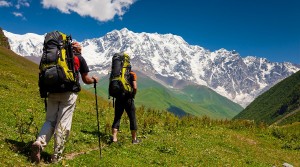 If there are people in the group who do not get along well with each other, problems can arise. If you have little experience, find tourists who can help you. You need to like each other. Choose fellow travelers who are with you in the same or in better physical shape.
If there are people in the group who do not get along well with each other, problems can arise. If you have little experience, find tourists who can help you. You need to like each other. Choose fellow travelers who are with you in the same or in better physical shape.
It will be very good if all members of the group have similar interests, for example:
- the desire to learn about the diversity of species of local birds,
- to photograph nature,
- climb rocks and so on.
Important: You do not need to join random groups with people you do not know, or who give the impression of those who do not understand what is going on. Later such companions can become a big burden.
Back
5 Pieces of Advice from Experienced Tourists
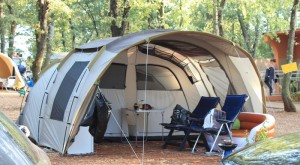 To set up camp, you also need to take into account a lot of nuances. For example, the camp is best set up in a safe place, so that there is access to water and firewood. Tents should be put away from dry trees because in case of bad weather the dwelling may be in the center of the blockage.
To set up camp, you also need to take into account a lot of nuances. For example, the camp is best set up in a safe place, so that there is access to water and firewood. Tents should be put away from dry trees because in case of bad weather the dwelling may be in the center of the blockage.- The fire must be planted away from dry bushes, grass and, consequently, trees within a radius of 5-6 meters from the tents so they are not affected by an accidental spark.
- Going on a hiking trip, remember, everything should be right. During the trip each step you take maybe crucial as your health as well as your companions’ life depends on how well you have prepared everything. Therefore safety during your trips should be in the first place. It is necessary to know and anticipate all the dangers that you may face.
- Don’t forget about the balsam for cuts and insect bites as well as for frostbite and burns. Remember that all medicinal packages (or instructions inside them) indicate how and in what cases to use this medicine.
- If you have forgotten to take some medicine, medicinal plants can also help. Instead of iodine, you can use the burning reddish juice of a lungwort. Bleeding can be stopped with the fresh juice of plantain or wormwood, as well as the greenish-brown pollen of the fungus-raincoat. These plants have disinfecting properties, calm pain and heal wounds. They are used for cuts, bruises, bites of bumblebees or wasps. Instead of cotton wool you can use ruffle cane.
Back